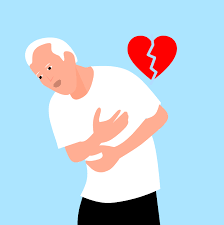Cognition
How the Heart Regulates the Mind
Examining recent research.
Posted February 25, 2022 Reviewed by Ekua Hagan
Key points
- Although people are mostly unaware of internal bodily processes such as the heartbeat, they can affect perception, cognition, and emotions.
- Fluctuations in cardiac rhythm are related to the processing of fear and threat.
- The phase of the cardiac cycle is an important modulator of perception and cognition.
- Some forms of vascular dementia can happen years before atherosclerosis in the brain.

Our brain continuously receives signals from the body and the environment. The process by which we identify signals from the body, such as "I am hungry," "I have a painful knee," is referred to as interoceptive while signals from outside the body are called exteroceptive. Although we are mostly unaware of internal bodily processes, such as our heartbeats, they can affect our perception, cognition, and emotions. My focus here is on interoception, as it concerns the heart. It represents a bottom-up rather than the usual top-down signaling system so popular in traditional neuroscience.
Cardiac activity can be divided into two phases: systole, when the heart muscle contracts and pumps blood into the body, followed by diastole, when the heart relaxes and refills with blood.
As we shall see, the heart and cycles of the heart play a surprising role in shaping perception and cognition.
Conscious Perception and the Cardiac Cycle
Beginning in the 1930s, scientists found that systole dampens pain and curbs startle reflexes. Further work traced this effect to the fact that during systole, pressure sensors send signals about the heart’s activity to inhibitory regions of the brain.
Scientists from the Max Planck Institute for Human Cognitive and Brain Sciences have shown two distinct ways in which the heartbeat modulates conscious perception. When subjects were presented with a barely detectable electrical current to their finger, they were more likely to perceive it during diastole and to miss it during systole. It seems that these heartbeat-related modulations are connected to interoceptive attention.
In another experiment, stimuli were detected and correctly localized less frequently, during systole relating to a shift in perceptual sensitivity.
Several studies have reported that timing along the cardiac cycle, that is systole vs. diastole, impacts the perception of visual or auditory stimuli. Most often, they have been reported to be higher during diastole than systole. These findings are likely related to spontaneous shifts between interoception and exteroception initiated by the heart.
Emotion, Memory, and the Cardiac Cycle
Sarah Garfinkel, a neuroscientist at Brighton and Sussex Medical School, investigates heart-brain interactions underlying the regulation of fear responses (6). Her studies have shown that fearful faces are detected more easily and rated as more intense at systole than at diastole. Correspondingly, responses in the amygdala were greater to fearful faces presented at systole relative to diastole. These novel findings highlight a major conduit by which short-term interoceptive fluctuations enhance perception and cognition specifically related to the processing of fear and threat.
Alejandro Galvez-Pol at UCL, Institute of Neurology and his group, studied the correlation between eye movements and heartbeat signals while participants freely compared differences between two visual arrangements. They found more eye movements were generated during systole, which has been reported as the period of maximal effect of the baroreceptors' activity upon cognition. Conversely, more fixations were found during diastole, when the baroreceptors were quiescent. Lastly, more blinks were generated in the later period of the cardiac cycle. Further research needs to be done to correlate eye movements with cognition and felt emotions.
Selfhood and the Heart
Researchers in Paris recently focused on "heartbeat-evoked potentials" (HEPs), which are electrical signals generated by the brain whenever the heart beats.
The team encouraged participants to let their minds roam freely while simultaneously monitoring their HEPs. From time to time, they were presented with a visual cue and report if, and how much, they were thinking about themselves at that moment. The researchers found that when a participant was having an active first-person thought ("I need to pee") correlated with a greater intensity of neural responses to heartbeats in a part of the cerebral cortex known as the ventral precuneus, while when a participant was thinking about themselves (e.g. "I am hungry") lead to more intense neural responses to heartbeats in the ventromedial prefrontal cortex. The scientists said, “Our experimental results directly support theories rooting selfhood in the neural monitoring of internal organs.”
Heart Disease and Dementia
Until now, it has been unclear how some forms of vascular dementia can happen years before atherosclerosis in the brain. New research from the University of Sheffield has found that heart disease causes a breakdown of a key brain function that links brain activity and blood flow, meaning the brain gets less blood for the same amount of activity.
Dr. Osman Shabir, the lead author of the study from the University of Sheffield's Neuroscience and Healthy Lifespan Institutes, has noted that Alzheimer's Disease is the most common form of dementia worldwide and heart disease is a major risk factor for both Alzheimer's and dementia.
Heart disease can directly cause brain dysfunction by tripling the protein beta-amyloid, which accumulates and triggers Alzheimer's, and dials up the inflammatory gene (IL1). What is most significant is that this happens before the buildup of cholesterol in the brain's blood vessels (atherosclerosis) and is a prelude to dementia.
This means the brain is deprived of optimal amounts of oxygen which eventually can lead to dementia.
The researchers also proposed that many patients' symptoms worsen after injuries or falls because of decreased brain blood flow with concurrent reduction of oxygen.
Parkinson’s Disease and Heart Attack

Parkinson's disease is a brain disorder characterized by progressive loss of physical movement, including tremors, slow or slurred speech, and/or stiffness or limited range of motion for walking and other physical activities. There is no cure for Parkinson's disease, and it is also associated with behavioral changes, depression, memory loss, and fatigue.
Jens Sundbøll, from the departments of clinical epidemiology and cardiology at the Aarhus University Hospital, Denmark compared the risk of Parkinson's disease and secondary parkinsonism among 182,000 patients who had a first-time heart attack. When compared to the control group the researchers found there was a 20% lower risk of Parkinson's disease among heart attack victims and a 28% lower risk of secondary parkinsonism.
The risk of Parkinson's appears to be lessened in these patients, in comparison to the general population. The reduced risk may reflect an inverse relationship between cardiovascular risk factors and Parkinson’s disease. While nobody knows the reason for this, we see once again the impact organs in the body have on our brain and mind.
References
Al, E., Iliopoulos, F., Forschack, N., ... & Villringer, A. (2020). Heart–brain interactions shape somatosensory perception and evoked potentials. Proceedings of the National Academy of Sciences, 117(19), 10575-10584.
S. A. Saxon, Detection of near threshold signals during four phases of cardiac cycle. Ala. J. Med. Sci. 7, 427–430 (1970).
C. A. Sandman, T. R. McCanne, D. N. Kaiser, B. Diamond, Heart rate and cardiac phase influences on visual perception. J. Comp. Physiol. Psychol. 91, 189–202 (1977).
Garfinkel SN, Barrett AB, Minati L, Dolan RJ, Seth AK, Critchley HD (2013) What the heart forgets: Cardiac timing influences memory for words and is modulated by metacognition and interoceptive
Galvez-Pol, A., McConnell, R., & Kilner, J. M. (2020). Active sampling in visual search is coupled to the cardiac cycle. Cognition, 196, 104149.
Shabir, O., Pendry, B., Lee, L., Eyre, B., Sharp, P. S., Rebollar, M. A., ... & Berwick, J. (2022). Assessment of neurovascular coupling and cortical spreading
depression in mixed mouse models of atherosclerosis and Alzheimer’s disease. Elife, 11, e68242.
Jens Sundbøll, Szimonetta Komjáthiné Szépligeti, Henrik Toft Sørensen et al. (2022). Risk of Parkinson Disease and Secondary Parkinsonism in Myocardial Infarction Survivors. Journal of the American Heart Association;




